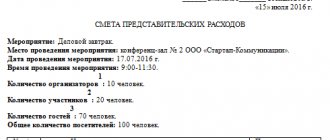This article is a translation of an article by Jacob Shryar dated April 18, 2020, published on the Officevibe blog.
Personnel turnover is one of the key metrics for HR management. A certain degree of turnover is inevitable, and its complete elimination is unrealistic. However, it is important for a company to find the optimal balance between leaving employees and hiring new ones. In this article, we will look at the types of employee turnover, their causes, consequences, and options for reducing turnover.
The concept of staff turnover
Personnel turnover demonstrates the level of employee dismissal activity. This indicator allows you to understand how effective the company’s personnel policy is.
Personnel turnover is the ratio, expressed as a percentage, of the number of persons who have broken their contract with the employer to the average number of hired subjects (hereinafter abbreviated as TC). When determining this index, a specific period is taken as a basis, for example, a calendar year. TC can be clearly demonstrated through a coefficient that is calculated using a special formula.
The frequency of personnel changes is an indicator of the general condition of the company. At the same time, the following positions are important for analyzing the reasons for turnover:
- intensity of layoffs and hiring;
- period of employment of the employee (how long the person worked at the enterprise).
Determination of staff turnover
Important. There are no strict normative values to which the TC indicator must comply. This index is neutral. For each organization, the optimal turnover is calculated individually, taking into account a number of factors, such as industry specifics or production scale.
Where and what is it used for?
This indicator is used in personnel services, personnel management services, labor and wage organization, financial and economic (depending on the organizational structure of the enterprise) as an indicator showing the level and nature of the movement of labor.
Like any indicator, this indicator informs us whether there are problems at the moment or whether everything is going well. Normal values mean the values that have developed in practice for various categories of personnel, sectors of the national economy and stages of development of the organization.
Human capital management specialists should keep constant records of layoffs by personnel category and by company division, examining not only the quantitative but also the qualitative characteristics of the phenomenon, that is, analyzing the reasons for staff turnover.
https://youtu.be/bBAPK3PZI-c
Types of staff turnover
There are many reasons why busy workers take payroll. Depending on the reasons that led to the renewal of personnel, several types of turnover are distinguished.
Table No. 1. TC classification:
| Criterion | Place of subsequent employment of the dismissed person | Structural unit by which the calculation is carried out | Initiator of termination of labor relations | |||
| View | Inside the company | External organizational | Absolute (for the enterprise in general) | Relative (by one department, division, by age, gender of those being dismissed) | Active – at the request of the employee | Passive - on the initiative of management |
If a person does not change employer, but only receives a promotion or moves to another department, we are talking about rotation within the organization. Registration with another employer indicates that there has been an external organizational turnover.
Certain types of staff turnover
Absolute turnover is determined according to generalized data for the entire company, and relative turnover is determined according to a separate criterion within one company, for example, for a specific department, according to a certain characteristic of those being dismissed (experience, position, gender, age).
An active labor contract is formed in connection with the termination of employment relations, which is formalized according to the will of the employee. For example, a person wants to get a job with a higher salary or moves to another city and is forced to change jobs. Passive turnover is associated with dismissals initiated by management. An example in this case would be the termination of a contract with an employee due to inadequacy of his position.
Important. Renewal of the team can be natural when cases of removal of individual employees and the infusion of new professionals have a positive effect on the conduct of business. Excessive turnover threatens material losses and general instability of business processes.
How is staff turnover beneficial?
There are clearly fewer points here: only two.
- New blood is pouring into the team. Renewing the staff is a good thing: people come to the company with new ideas, a new vision of development, a new look at work in general. It often happens that a close-knit team, even if it gets along well with each other, can no longer offer anything new due to stagnation of thoughts and ideas. You can and should listen to talented newcomers. But again, we repeat, this is good when it happens naturally, and not forcefully and without desire.
- A new employee can be paid less, especially during the probationary period. Unscrupulous companies do just that: they recruit young people with a salary of two-thirds or even half of what they should, and a few days before the end of the term they kick them out with feigned regret: they say, you weren’t right for us, dude. Needless to say, this is a road to nowhere. This is the case when you can’t see the forest for the trees (instant benefit) (attracting valuable employees for the development of the company).
What types of dismissal do not affect turnover?
Termination of labor relations occurs due to various factors, but not all of them affect the Labor Code index.
Types of dismissals under Russian law
To calculate the coefficient, dismissals at the employee’s own request, by agreement of the parties, due to violation of labor discipline (absenteeism, ignoring safety requirements) are taken into account. This list also includes failure to pass mandatory certification and transfer to another position.
To determine the indicator, cases of contract termination based on:
- staff or headcount reductions;
- reorganization;
- retirement of a worker;
- changes in management and related personnel renewal.
Reasons for increasing staff turnover
Common reasons for employee turnover
Among the most common reasons that influence the instability of the subject composition of the work team are:
- Insufficient wages - very often this factor is the main lever that forces an employee to look for a new job. Uncompetitive salaries can ultimately lead to a constant outflow of specialists from the enterprise.
- Business line - retail trade and consumer services have a higher personnel renewal rate than, for example, IT or industrial production.
- Lack of promotion - a large percentage of specialists strive for professional development and stable climb up the career ladder. A company that does not meet these needs may continually suffer from a lack of labor resources.
- The actual place of work - in megacities, people often change companies, since a large concentration of competing organizations gives the employee the opportunity to choose. In small towns, people tend to hold on to their jobs due to the lack of other offers.
- Working conditions - climate, risks of industrial herbs, harmful factors affecting the health and general well-being of employees.
- The situation and relationships in the team and with management - employee outflow occurs due to a low level of communication between the manager and subordinates, tense relations between hired entities.
An approximate diagram of the costs of an enterprise when breaking a contract with a worker
The reason for termination of an employment contract can often be determined based on the length of time a person has been employed by a particular company. It is believed that dismissals in the first 6 months of performance signal the shortcomings of personnel selection when hiring. Leaving during the first year demonstrates insufficient adaptation skills of the person leaving, and the high percentage of outflow of employed persons with 3 years or more of experience indicates the instability of the hiring organization.
Example of a dismissal survey
In addition to tracking the turnover rate itself, it is also important to understand the causes of churn and methods of elimination. One of the simplest options is to conduct employee exit surveys and also conduct surveys for current employees. Naturally, it is important to record all the reasons and analyze the situation at least once a quarter.
Example questions for dismissed employees:
- When you first started working, who explained your responsibilities to you and introduced you to the rules and features of the activity?
- Have you read the New Employee Folder? Were you given printed materials? Was everything clear to you?
- Did they help you in your work if something didn’t work out? Who? (Manager, colleagues, a little of everything, no one.)
- Have you ever had problems in your team? With whom? (With the manager, with colleagues.) How were the problems solved?
- How can you generally describe the atmosphere in the team?
- What are the reasons for your dismissal?
- Could you recommend your friends to work in this department? And in general in our company?
Formula for calculating staff turnover rate
The staff turnover rate (CTR) is determined using a special formula. For calculations you need to know the following information:
- the period for which the analysis needs to be carried out;
- number of people fired;
- indicator of the average number of employees (ASH) for the reporting period of time.
Calculation of staff turnover (formula 1)
To determine the NPV, it is necessary to regularly maintain statistics of the total number of units hired on a certain date. For example, every month, as of the 1st day, you can note how many people in total occupy their positions according to the employment contract. Some enterprises summarize information for two or three months.
All marked indicators are summed up, and the resulting number is divided by the number of months. For example, you need to calculate the NPV for the year worked. In this case, the following algorithm is used:
NFR for the year = (C1 + C2 + C3 + ….. + C12)/12
or
NFR for the year = (C1 + C2) / 2 + (C3 + C4) / 2 + ....,
where C1 is the total number of personnel for January,
C2 - for February and so on.
Correctly calculating the actual CTC is possible only if the true reasons for the departure of each person are identified. Often, in an application, a person indicates the wording “at his own request,” but in fact, the prerequisites for processing the calculation are completely different. In this regard, there is an opinion that the coefficient should be determined in a different way.
Calculation of TC (formula 2)
To understand the real picture of the variability in the composition of the team at a company, it is not enough to simply calculate the CPC. Qualitative analysis involves obtaining answers to the following questions:
- why the specialist quit;
- what was his length of service in the company;
- in which department he held the position;
- what resources should the administration use to compensate for the loss of manpower.
Important. In modern HR management, for a comprehensive assessment of the personnel status of organizations, they use the internal benchmarking method, which consists of comparing CTC for different periods of business activity.
Other indicators for TC analysis
We work with feedback
You're the boss, you know what's best. But if you stick to your line without listening to the opinions of your employees, be prepared for layoffs. It is better not to take staff to extremes and conduct surveys regularly.
Source: SNL The main thing is not to lead to such feedback
Galina Bobkova, HR consultant, career and self-realization coach: - Old-timers of the company most often lose motivation and think about leaving the company due to some changes at work or due to a lack of feedback from management. And people are designed in such a way that they are often inclined to assume the worst-case scenarios for the development of events, and few people like to be an obedient silent cog. This can be treated through dialogue, attention and respect for those who work for us. Even if these are negative aspects, it is better for people to know about them than to think of something themselves.
Klipfolio, which has combated churn with surveys, recommends following these guidelines when surveying:
● Give advance notice of the survey. If you give it unexpectedly, people will become suspicious and will not be entirely honest, as they will be afraid for their jobs. ● Maintain anonymity. Conduct a survey using an online service (such as Survey Monkey). At most, you can ask in which department/unit of the company they work. ● Don't rush. Urgency equals anxiety. Give employees a few weeks to complete the survey. ● Share results. If you want openness and trust, then honestly share the results of the survey with employees, be prepared to discuss it and take steps to improve the situation.
Klipfolio used a questionnaire with 26 statements that had to be rated (agree - somewhat agree - somewhat disagree - disagree). For example, “I am satisfied with my current salary”, “I have a good friend at work”, “I see myself working in the company in a year.” But in your case, the statements may be completely different, reflecting exactly what you need to know in your situation.
Ask the opinions of not only current employees, but also those who have just left. Call the employee, before he packs his things, to your office and ask him to honestly tell you what he didn’t like. This will help you retain those who are still left.
Back to Contents
Standard turnover indicators
In practice, it is considered normal to have a CTC in the range from 3% to 5%. If the index value does not even reach 3%, then there is a risk of falling into a stagnation phase, since minimal personnel renewal is still necessary to improve the company’s overall achievements. It is considered a completely acceptable phenomenon for workers to retire upon reaching retirement age due to relocation and the elimination of insufficiently competent employees.
A coefficient value that exceeds 50% indicates ineffective management and unjustified costs for the constant search and training of applicants for vacant positions.
Important. Each corporation must independently calculate its optimal CPC. To do this, you need to take into account the industry direction, working conditions, salary levels, reward system and other levers of influence.
Table No. 2. Labor Code standards by industry:
| Industry | Standard TC value, % |
| High tech | 8-10 |
| Trade | 30 |
| Production | 12-15 |
| Construction, real estate | 20 |
| Hotel business, tourism | 26 |
| transport and logistic | 25 |
Table No. 3. Standards in terms of job responsibilities:
| Job title | TC norm, % |
| Leaders, top managers | 0-2 |
| Middle managers | 10 |
| Ordinary specialists | 30 |
| Operating personnel without special qualifications | 50 |
Turnover rate by industry










